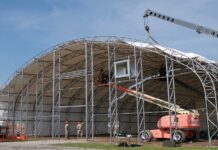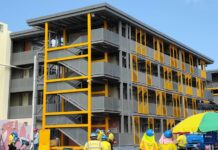The transportation of large components is just as crucial in today’s fast-paced and continually evolving construction landscape as the structures they will eventually form. Heavy loads require careful planning and specialized equipment to transport, and brute strength is not involved. Doing it right is essential when a single misplaced calculation can result in damaged machinery, hurt workers, or expensive delays.
Contemporary buildings depend more on prefabricated but heavy components and specialty equipment that must be hauled safely through rugged terrain and complicated regulatory jurisdictions. This guide deconstructs the key techniques for successfully hauling heavy loads, from planning through final positioning.
Understanding Heavy Load Transportation Fundamentals
Heavy load transport involves components exceeding standard weight limits or dimensions that surpass normal clearances. The categories include structural components, industrial gear, and prefabricated structures.
The issues are substantial: road surfaces could buckle under focused weight, bridges intended to take distributed loads may collapse, and clearance concerns necessitate detailed route planning. Regulatory demands increase complexity with specific permits, police escorts, and time limitations.
Construction managers must carefully evaluate options from leading brands when selecting equipment for hauling enormous loads to ensure that they have trailers with the capacity, the appropriate axle layout, and the appropriate safety features for their specific project requirements.
Various loads call for multiple methods. What works for a bulldozer might not work for transporting a fragile generator. Achievement necessitates a thorough understanding of physics, engineering concepts, and specific safety guidelines.
Planning Your Heavy Load Transport
Effective planning starts with a thorough site assessment. Accurate dimensions, weight, center of gravity, and unique handling details must be recorded. Minor errors can result in disastrous failure.
Route planning is more than determining the shortest route. You want roads that are physically capable of carrying the load while disrupting things as little as possible. An extensive survey checks road widths, bridge capacity, overhead clearances, turn radius, and likely obstacles.
A special note should be made of the permitting process. Permits usually require approvals by several authorities, which are more than bureaucratic roadblocks—they ensure public infrastructure doesn’t get hurt.
Complex transports frequently require temporary modifications, such as removing street signs, raising power lines, or reinforcing bridges. Each modification needs its mini-project plan, complete with approvals and restoration arrangements.
Equipment Selection and Preparation
Trailer options range from basic lowboys to sophisticated self-propelled modular transporters (SPMTs) capable of moving components weighing thousands of tons. Power units must be equally specialized, with heavy-duty tractors often working in tandem for the most significant loads.
Safety equipment includes robust load securement devices, monitoring systems, and enhanced communication tools. Before any heavy move, thorough equipment inspection becomes critical, checking hydraulic systems, suspension components, connection points, and braking systems.
Load securing combines blocking, bracing, tie-downs, and custom fixtures to prevent movement during transport. Even slight acceleration can generate enormous forces to secure equipment.
Weight distribution ensures proper axle weights, balanced side-to-side loading, and appropriate tongue weight for stability. For complex loads, 3D modeling helps visualize distribution before physical loading begins.
Execution and Problem-Solving
For transport to be executed successfully, drivers, escort cars, spotters, and officials must all work together seamlessly. Clear communication procedures must be followed, and backup plans for different situations must be created.
Weather monitoring becomes crucial—high winds can destabilize tall loads, while rain can compromise ground conditions at loading sites. Professional teams establish clear go/no-go criteria based on forecast conditions.
Despite careful planning, problems inevitably arise. Quick troubleshooting requires experienced personnel who understand the physics and mechanics involved. Competent teams bring specialized tools and spare parts for common issues.
Transport technology advances rapidly, with real-time monitoring systems tracking stresses and strains throughout the journey. GPS-guided route planning software helps identify potential problems before they occur, while drone surveys provide detailed information about route conditions.




























